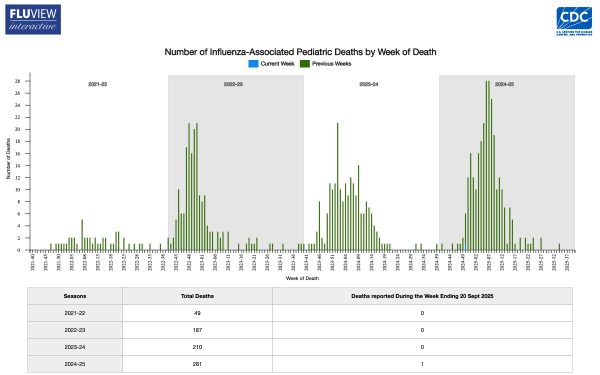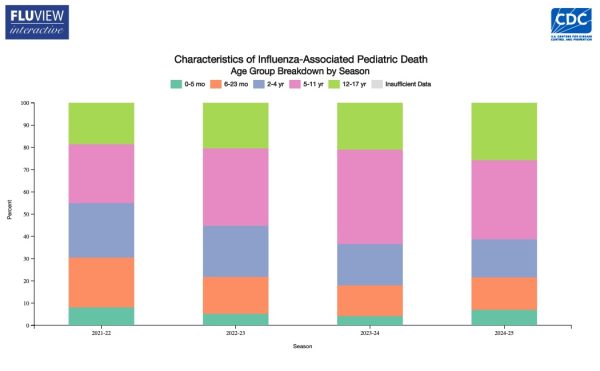It’s that time of year again, the beginning of the cold and influenza (flu) season. However, this year, and for the past six years, the illness season has intensified, with COVID-19 also contributing to the mix.
The cold season is from early fall to late winter; one of the reasons for this is because of “Low humidity, causing dry nasal passages which are more susceptible to viruses,” said Johns Hopkins Medicine. Similarly, the Oregon Health Authority states that the flu season typically lasts from October to April.
Unlike the flu and the common cold, COVID-19 does not have a rigid infection pattern. Frontiers studied the seasonality of COVID-19 and found that it generally peaks three times a year: one larger peak during winter months and two smaller peaks during spring/summer months.
According to the National Library of Medicine, “Fall school openings have been consistently associated with an increase in the transmission of respiratory agents, including occasionally influenza.” Respiratory agents are the components that lead to illnesses like COVID-19, the flu or more chronic sicknesses. For example, long-term exposure to lung irritants, specifically cigarette smoke, can lead to Chronic Obstructive Pulmonary Disease, specifically Emphysema.
While a seasonal increase of cold and flu infections is expected, last year’s season included more pediatric cases of the cold and flu, and therefore more deaths, than had been seen in a while.

According to the U.S. Centers for Disease Control and Prevention (CDC), the death rate for pediatric influenza throughout the 2024-2025 season in the U.S. was higher than it had been for a decade.

Last year, the death rate for children aged 12-17 also spiked. This age group had the second-highest pediatric mortality rate of 25.6% of the total 281. However, only two of these were in Oregon, according to the Oregon Health Authority.
Another report from the CDC explained that across the nation, there were 3.8 deaths per 1 million children. “Approximately one half of children who died from influenza had an underlying medical condition, and 89% were not fully vaccinated.” This shows the importance of flu vaccinations in children, especially with another flu season approaching.
Kathy Lummen, the attendance clerk at Ida B. Wells-Barnett High School (IBW), has noticed a drop in student attendance at the beginning of the school year due to illness. During the first month of school, there were a total of 1,430 full-day student absences due to illness.
While some students were only absent for one day, others have reported being absent due to illness for up to 15 days. Furthermore, 696 IBW students have reported an absence due to illness, with a combined average of two days absent.
Out of the 696 student absences, nearly 30% were sophomores, the class with the most absences due to illness. Meanwhile, the seniors only made up nearly 20%, allowing them to become the class with the least absences due to illness.
During the first few weeks of school, it was not uncommon for teachers to change their lesson plans to accommodate the large number of student absences.
“In my chemistry class, for one of the days that I was gone, there were a bunch of kids who were gone and a bunch of kids who didn’t really understand the lab that we were doing. So, he [Tony Petraglia] had us redo the lab the next class,” said Natalie McCarthy, a sophomore at IBW and someone who missed three days of school due to an infection of COVID-19.
After the COVID-19 pandemic, many teachers are more willing to upload assignments to Canvas for students to easily make up. Sylvia Scott, a Health 1 & 2 teacher at IBW, said, “Now I do it [upload work] online, because I know that some students, if they do get COVID, they might be out for a week or two at a time.”
Cheryl Bell, the nurse at IBW, said, specifically towards students and families, “When you’re feeling bad enough where you can’t keep your eyes open and you’re actively coughing and you can’t focus… or if you’re having to take a nap in class, you need to go [home].”
Furthermore, Bell also states that she follows a guide from the Oregon Health Authority and Oregon Department of Education that states: if you are experiencing a fever of 100.4 degrees Fahrenheit or greater, new coughing, new difficulty breathing, diarrhea, vomiting, headache with stiff neck or fever, skin rash or open sores, red eyes with colored drainage, jaundice or a major health event such as an illness infection lasting more than two weeks or a hospital stay, you should stay home.
Scott agrees and encourages her students to prioritize their own and others’ health. “[My students and I] talk a lot about washing hands and using hand sanitizer…about staying home when you’re sick, wearing a mask and not sharing food and drinks,” said Scott.
















Stephanie Varon • Oct 20, 2025 at 9:44 pm
This was a very informative and well-written article. Health is a gift to be valued and maintained both for individuals and the entire community. It does us well to be informed about the risks of exposure and the appropriate steps to be taken in order to protect ourselves and others.